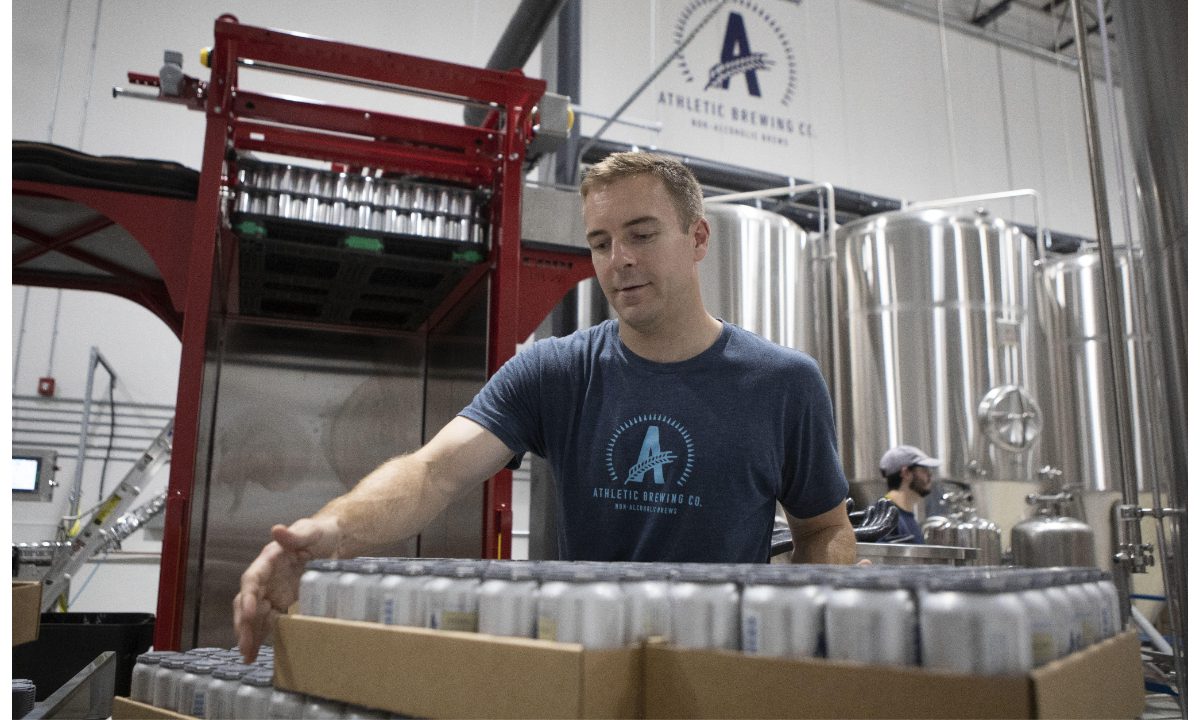 Among the myriad health and wellness trends that have grown more popular since the start of the pandemic, one of the arguably more surprising categories to take hold is non-alcoholic beverages that resemble their alcoholic counterpoints. In addition to the rise in spirits-free “mocktail” sales, the past year and a half has also fueled the nonalcoholic beer category.
Among the myriad health and wellness trends that have grown more popular since the start of the pandemic, one of the arguably more surprising categories to take hold is non-alcoholic beverages that resemble their alcoholic counterpoints. In addition to the rise in spirits-free “mocktail” sales, the past year and a half has also fueled the nonalcoholic beer category.
See Also: Pandemic Raises A Glass To Non-Alcoholic ‘Mocktails’
“The category had been totally stagnant for 30 years, no new product offerings for a quarter of a century before we launched, and since then the category overall has grown to 230 percent,” Bill Shufelt, CEO and co-founder of nonalcoholic beer brand Athletic Brewing Company, told PYMNTS in an interview. “So, it’s really fun. With the proof of concept, and then all the tailwinds at the back of the category — health, mindfulness, wellness. These are things that are here for a long time to stay, and we’re excited with our position.”
And it’s not just consumers getting behind the category. In late spring, it was reported that Athletic Brewing had raised $50 million in Series C funding, which the company officially announced last month. The company plans to use these funds to open a larger brewery on the east coast and to grow its footprint from the 30 states in which it already has a presence to all 50.
You Might Also Like: Non-Alcoholic Craft Brewery Raises $50 Million As Demand For Alcohol-Free Beer Grows
Fertile Ground
There is a handful of tailwinds that come together into something of a tail gust for non-alcoholic beer. One, of course, is the rise in an understanding of wellness that is not based on calories alone, but on how different behaviors affect consumers’ mental acuity and their energy levels — Shufelt noted that the “common theme” among Athletic Brewing’s customers is that they tend to be “mindful young adults.”
He pointed out that the beverages that have traditionally led the non-alcoholic category, including high-sugar juices and soft drinks, have been “losing significant share and occasions.” Conversely, people are purchasing more health-conscious alternatives.
Shufelt explained, “That could be a kombucha, could be a non-alcoholic beer, could be a cold brew coffee, and that’s why you see the explosion of all these categories.”
He compared the turn from sugary beverages to lower-sugar alternatives to many consumers’ shift from meat to plant-based substitutes, noting that the availability of “better information but also better products” has created rapid growth in both spaces in recent months, with new technology making better-tasting options possible.
Shufelt believes that part of the demand for nonalcoholic beverages has also come from the rise of fitness-tracking wearables, which have heightened many consumers’ focus on “how the inputs you consume affect your outputs.” Consequently, beverages such as alcoholic drinks, which can have a negative impact on those outputs — Shufelt specifically named performance, sleep quality and heart rate — have become less popular with these consumers.
He noted that with the alcohol removed, beer can become a health drink, given that studies have shown it contains high amounts of electrolytes and that it could have anti-inflammatory properties, making the beverage attractive to these wellness-seeking consumers.
All The Young Dudes
There has been a major demographic shift in the audience for non-alcoholic beer. Shufelt noted that while in decades past, consumers “tended to age out of drinking alcohol,” opting for non-alcoholic beer when they got older, most of the demand now comes from younger consumers — 80 percent of the company’s customers are under the age of 44.
The company sells direct to consumer (D2C), giving it access to in-depth information about its shoppers. From this data, Athletic Brewing has noticed three categories of customers who typically opt for the brand’s beverages. One is the “weekend warrior,” someone who is highly active both in their day job and in the rest of their life, is engaged in social causes, is concerned about environmental issues and is generally conscious of their health.
Another is the young parent, someone who wants to stay sharp “as they’re chasing kids around” and wants to fill the kitchen with products that are safe for the whole family. The third is “elite athletes,” with Shufelt noting that this last category includes those ranging from “top ironmen to professional sports players.”
Welcome To The Working Week
Part of the advantage that Athletic Brewing has over alcoholic beer, as Shufelt sees it, is that it “is not only for your Friday and Saturday night, but something you can drink seven days a week.” While beer companies have never had much trouble finding customers who would want to crack open a cold one on a Tuesday, for highly health-conscious consumers, Sunday-Thursday might not have historically been peak beer-drinking time.
Additionally, Athletic Brewing has an advantage over would-be newcomers who want to take advantage of that workday opportunity. Shufelt noted that the technology required to make safe-to-drink nonalcoholic beer that meets U.S. Food and Drug Administration (FDA) standards is still costly, requiring a high investment that prohibits casual forays into the space. This high barrier of entry has made it possible for Athletic Brewing to be, Shufelt explained, “about a 50 percent share player” in non-alcoholic beer.
“I really think non-alcoholic beer is going to be north of 20 percent of the beer category in five years, but it’s not going to be because we’re just taking share,” said Shufelt. “It’s because it’s growing the category from those two days into a seven-day-a-week product.”